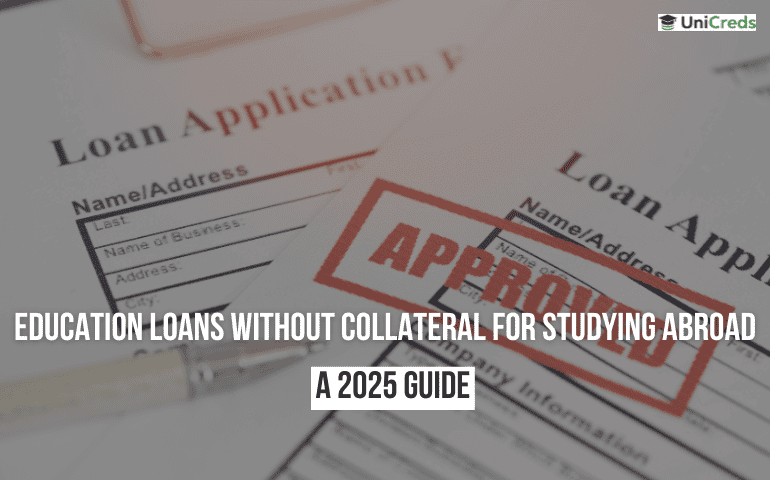Table of Contents
With higher education proving costly after every annual tuition fee revision by colleges and universities, ulterior financial assistance is the go-to solution for many students. University scholarships and bursaries are highly competitive; many students often miss out on these opportunities. However, saving on a valuable education plan or SAVE is prevalent.
Borrowing is usually straightforward, but there is a high defaulting rate since many people don’t need a better repayment of education loans. With a strategy or advice, many graduates succeed in their education loan repayment or find it easier to cope with the loan terms, including interest rates and instalment amounts. Initially, people resorted to income-driven repayment methods such as REPAYE, but recently, the US government has delivered good news to all education loan holders.
There was a three-and-a-half-year break from federal student loan repayment, and borrowers resumed paying their education debt in October 2023. The Biden administration established a new IDR plan, the SAVE plan, to provide debt relief to over 43 million Americans who were under federal student loan debt.
Fast Facts Or Key Takeaways
This income-based repayment plan has several unique attributes that are different from the other IDR plans.
| Fast Facts and Key Takeaways |
| The SAVE plan will cut education loan payments in half or less |
| The SAVE plan will start in February 2024 |
| The SAVE plan was the government’s response to the Supreme Court’s verdict to strike down a wide education loan forgiveness. |
| The SAVE plan bases your monthly instalments on adjusted gross income and family size. |
| The SAVE plan has interest benefits. |
| Borrowers with $12,000 or less debts will enjoy forgiveness after 10+ years. |
What Is The SAVE Plan?
Saving on a Valuable Education plan is an IDR plan that the Biden government launched in August 2023. It is meant to replace the Revised Pay As You Earn plan many student loan borrowers initially adopted. All REPAYE borrowers are automatically enrolled on the SAVE plan without taking any action.
Borrowers of other IDR plans can also switch students to the SAVE plan. Switching student loan repayment plans is done by contacting your student loan service provider or via the Federal Student Aid website. Other Savings on a Valuable Education plan details include payments based on income and family size, the lowest monthly payment requirements, and favours individuals with a good standing direct loan.
Features Of The Plan
The SAVE plan has its unique share of features that make it the best option for many borrowers. Some of these features include:
- Lower monthly education loan payments are cut from 10% to 5% of discretionary income for borrowers holding education loans for undergraduate programmes. Monthly payments for borrowers having education loans for undergraduate and graduate programmes (repayment of multiple student loans) will average from 5% to 10% of discretionary income.
- Increased income exemption – the Saving On a Valuable Education Plan has increased income exemption from 150% to 225% of the poverty line.
- Zero capitalization of unpaid interest – the SAVE plan excludes the outstanding interest in your student loan balance if your education loan payment cannot cover the monthly interest charge.
- A new discretionary income formula – the new formula is based on 225% of the federal poverty level on the student loan repayment calculator. This means an individual borrower less than or equal to $32,800 or one earning $67,500 with a family of four will have a $0 monthly education loan payment.
- Interest benefits that stop the balance from growing – after making a full schedule payment, the SAVE plan eliminates 100% of the remaining monthly interest for subsidized and unsubsidized loans. This means unpaid interest accrued since the last payment won’t grow your loan balance after making your monthly payments.
- Income exclusions – if you’re married and your spouse file tax separately, the SAVE plan excludes the spousal income in the total income calculations.
- Early forgiveness – for borrowers with loans of $12,000 or less, loan forgiveness can come as early as ten years, on conditions of making qualifying payments and non-payments within the period. Every additional $1000 a year is added to the timeline up to 20 years for undergraduate and 25 years for graduate loans.
Which Loans Are Eligible?
There are specific loans that qualify for the SAVE plan. Some loans give you direct eligibility, some have conditions, while others are ineligible. Borrowers with defaulted loans may qualify for the Fresh Start initiative to help them get their loans back in good standing. This free procedure takes approximately 10 minutes, and you can quickly register and enrol in the SAVE plan.
| Eligible under the SAVE plan | Eligible if consolidated | Ineligible |
| -Direct subsidized loans-Direct unsubsidized loans-Direct PLUS Loans made to professional or graduate students- Direct consolidation loans (not used for the repayment of parent PLUS loans) | -Subsidized Federal Stafford Loans (courtesy of the FFEL Program)-Unsubsidized Federal Stafford Loans (courtesy of the FFEL Program)-FFEL PLUS Loans made to professional or graduate students-FFEL Consolidation Loans (not used for the repayment of parent PLUS loans)-Federal Perkins Loans | -Parent PLUS loans-Direct Consolidation Loans (used for the repayment of parent PLUS loans)-FFEL Program Loans-Private student loans-Defaulted loans |
How Much Will I Pay Each Month?
The SAVE plan bases your monthly payments on income and family size. You can use a saving on a valuable education plan calculator to determine how much you’d pay for monthly instalments. It is essential to know that savings on a valuable education plan income limits affect the interest and monthly instalment.
Estimates of monthly payments under the SAVE plan:
| Income | Family size | 1 | 2 | 3 | 4 |
| $60,000 | $227 | $130 | $34 | $0 |
| $50,000 | $143 | $47 | $0 | $0 |
| $40,000 | $60 | $0 | $0 | $0 |
| $30,000 | $0 | $0 | $0 | $0 |
How The SAVE Plan Works?
Since it is similar to other IDR plans, there are a few additional steps for signing in. Once enrolled, your payments will be cut in half, lower amounts, or no amounts at all. There is also a grace period from 1 October 2023 to 30 September 2024. Within this period, borrowers who miss payments won’t negatively impact their loan status or credit score.
Advantages And Disadvantages Of The SAVE Plan
There is a fair share of savings on a valuable education plan, pros and cons, that every borrower should be informed of. This helps you prepare for what’s coming and decide if the SAVE plan is your ideal IDR option.
| Advantages | Disadvantages |
| -Payments can be as low as $0 -There is no capitalized interest -Spousal signature is not necessary -Higher-income exemption -Payments capped at 5% of discretionary income | -It’s not a student loan forgiveness -It assumes functionality in February 2024 -Longer repayment period -There isn’t any significant relief for graduate students |
SAVE vs. REPAYE
People consider the SAVE plan to be an upgrade of REPAYE. This has given rise to a few differences, making SAVE a better alternative altogether. It covers the payment amounts, interest rates, income exemptions, and other savings on valuable education plan details.
| Features | IDR Plan | SAVE Plan | REPAYE Plan |
| Payment amount | 5% to 10% of discretionary income | 10% of discretionary income |
| Payment calculation | 225% of the federal poverty line | 150% of the federal poverty line |
| Forgiveness timeline | Loan forgiveness after ten years for borrowers with loans equal to or less than $12,000 | Forgiveness for undergraduate loans after 20 years and 25 years for graduate loans |
| Interest | Full interest subsidy for the entire repayment period | Limited interest subsidy |
| Spousal income | It doesn’t include spousal income if you file taxes separately | Always have spousal income, even if you file taxes separately |
Comparing Income-Driven Repayment Plans
While we have already described the terms of SAVE, formerly REPAYE, here is how it compares to other IDR plans. PAYE, IBR, and ICR are the most common other options that we can use for reference and comparison.
| Features | IDR Plans | PAYE (Pay As You Earn) | IBR (Income-BasedRepayment) | ICR (Income-ContingentRepayment) |
| Payment terms | 10% of income with a limit not exceeding the payment amount on a Standard Repayment Plan | 15% of income for loans borrowed before 2014 or 10% of income for loans borrowed after 2014 | 20% of income or payment you’d make with a fixed income running for 12+ years straight |
| Forgiveness timeline | 20 years | 25 years for loans borrowed before 2014 or 20 years for loans borrowed after 2014 | 25 years |
FAQs
1. How Do I Submit My Request for Saving On A Valuable Education Plan?
You can submit your request for the SAVE plan by contacting your student loan service provider or via the Federal Student Aid website.
2. Will My Remaining Balance Be Forgiven After 20 or 25 Years?
The remaining balance will be liable for forgiveness for undergraduate loans after 20 years and 25 years for graduate loans.
3. Will I Have to Pay Taxes on the Amount Forgiven Under the SAVE Plan?
There is a tax exemption for forgiven loan amounts under the SAVE plan.
4. Who Is Eligible for the Saving On A Valuable Education Plan?
All student loan borrowers are eligible for the SAVE plan, provided they meet the requirements.
5. Is the SAVE Plan Worth It?
The SAVE plan is worth it as there is plenty for borrowers to gain.










0 Comments